Australian Shepherd: description of the breed, colors, character and content
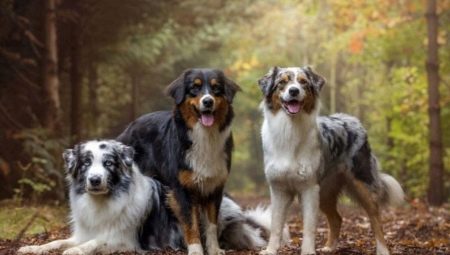
Flying swings and fiery dances, a dog running with a simulation of sore legs, high jumping rope, jumping on its hind legs over barriers, a balance bar on a horizontal cane - all these are the tricks that the famous Jay Sisler taught his beloved Australian Shepherd (Aussie). With the participation of this particular tailed movie star, a number of films have been shot that delighted the public. We are familiar with Aussie characters from Walt Disney films.
The characteristics of this wonderful breed attest to the many benefits of the Australian Shepherd, but the most important of them are unusual quick wit and surprisingly cheerful and kind disposition.
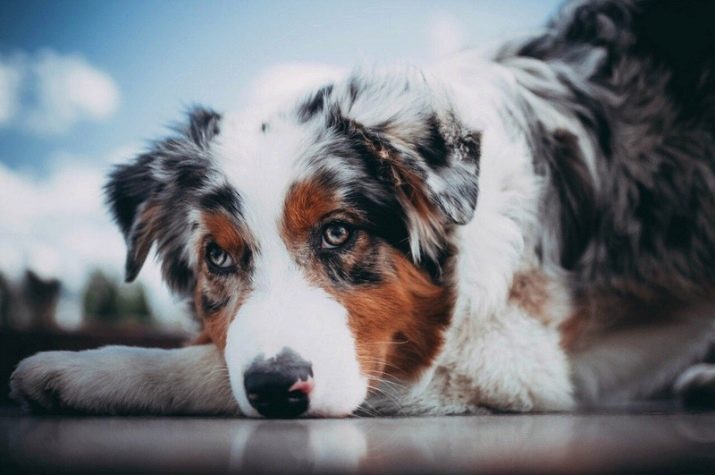
History of appearance
At the end of the 19th century, the rapid development of cattle breeding in North America led to the need to find the most effective breed of herding dogs.
The ancestors of the Aussies appeared in America along with immigrants from Spain and France. At that time, a significant number of various breeds of herding dogs were imported to the continent, some of them laid the foundation for new breeds.
The nature of the west of America is unlike that of Europe; it is characterized by arid regions with significant changes in altitude and temperature. Therefore, shepherds needed hardy and unpretentious four-legged helpers who could properly manage and reliably guard flocks of sheep and other livestock.
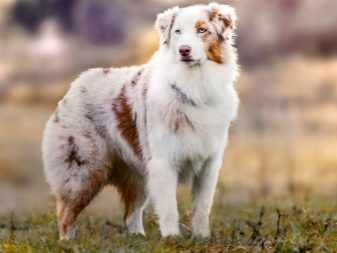
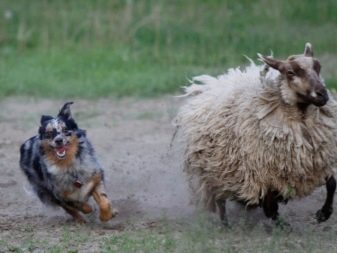
The main criteria for breeders and farmers engaged in cattle breeding were the working capacity, endurance, quick wit and physical strength of the new breed.The choice of breeds for breeding such a dog seemed quite wide, since the development of the New World was accompanied by its intensive settlement by herders from many regions of the world, including Australia.
In the course of careful study of the issue breeders have selected for breeding the best representatives of Basque herding dogs (imported by the Spaniards from Australia), Pyrenean Shepherds, Bernese Mountain Dogs and Collies... In the course of hard and painstaking work, the specialists managed to develop a completely new breed that meets all the required criteria, which was named the Australian Shepherd or Aussie.
The result of the selection was so successful that these super-energetic animals began to be used not only in pastures, but also in rodeos, where easily trained Aussies entertained the audience with unusual and complex tricks. Animals were also actively used as messengers during the period of hostilities.
The new breed was registered as a service herding dog in 1957. Full recognition came to the breed only in the XXI century.
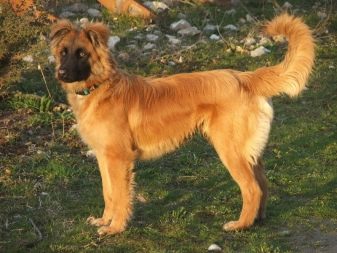
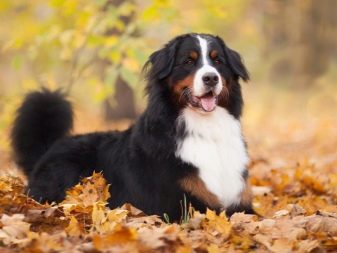
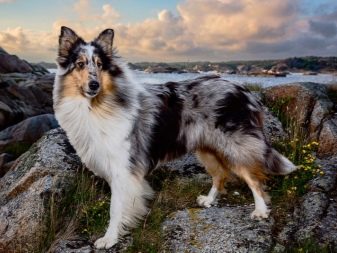
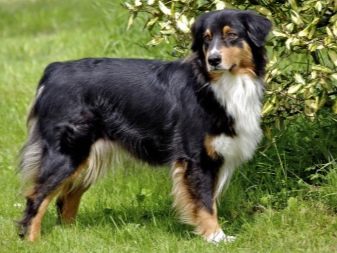
Description of the breed
Starting its service to humans as a herding dog, due to its behavioral characteristics, the Aussie quickly gained popularity as family pets and loyal companions. Newly bred Australians are extremely sociable, friendly and peaceful. The lack of aggressiveness allows them to get along well with pets.
Often among them there are specimens with heterochromia (eyes of different colors). Sexual dimorphism is clearly expressed in the breed - Aussie bitches are smaller than males in size, more graceful and beautiful in constitution.
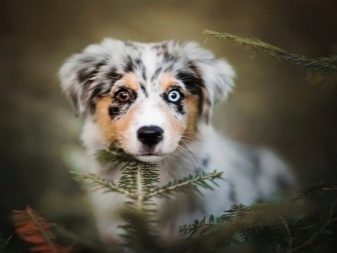
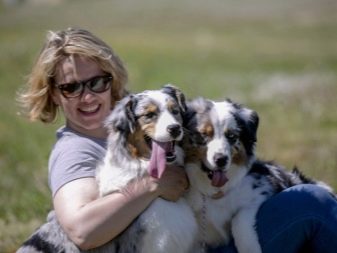
These energetic animals are quite suitable for people who adhere to an active lifestyle.
These animals are medium in size, hardy and strong. The growth of an adult varies in the range of 45-60 cm. The weight of adult males reaches 40 kg. The type of addition is harmonious:
- proportional, flexible and muscular;
- paws of medium length, with rounded pads, set straight;
- puppies are born with a small tail, growing in mature individuals up to 10 cm, covered with long hair;
- docking is usually done and the remaining small tip of the tail is called a "bobtail";
- the head is large and slightly elongated towards the nose;
- ears are triangular in shape, of medium length;
- the eyes are keen, inquisitive, almond-shaped, bright blue, greenish or light brown;
- coat, with a compacted undercoat, very thick;
- the hair on the head, ears and forepaws is shorter.
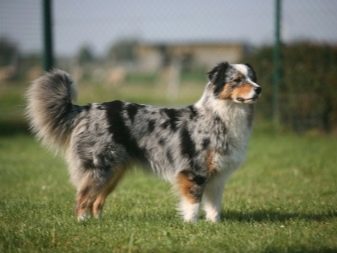
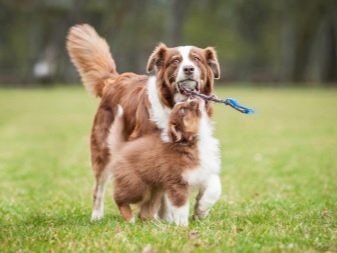
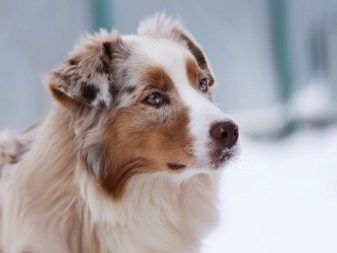
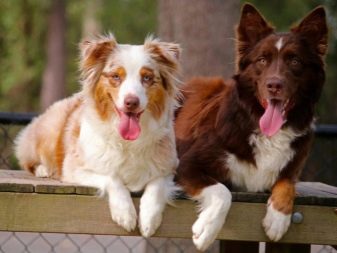
It is noteworthy that the breed has an analogue - the mini-Aussie. A full copy of its larger counterparts reaches a height of 30-40 cm. The weight of a miniature version is no more than 25 kg.
The Miniature Shepherd Dog Breeding Program started in 1968. The goal of the program was to create a smaller version of the breed to simplify its maintenance in an apartment. Breeders managed to breed small dogs and get a real companion for urban conditions. The breed was registered 20 years later and received the name "North American Shepherd".
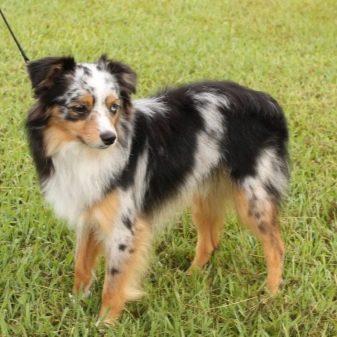
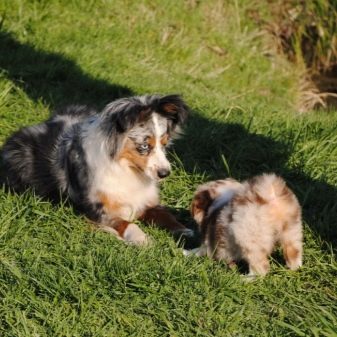
The color of the Australians is rich in a varied spectrum of shades and forms of patterns. In this sense, two identical colors do not exist in dogs, each individual is absolutely unique. Nevertheless, the breed standard allows 4 types of color:
- the dominant color is black, but tricolor is allowed - spots of red, brown and light shades;
- the main color is bright red, with possible small white spots;
- dominates a gray-bluish color with a silvery shade (merle - blue marble), with a wonderful marble pattern of reddish and white inclusions;
- the main color is a dark red or reddish color with dark and light spots scattered over the body (red marble).
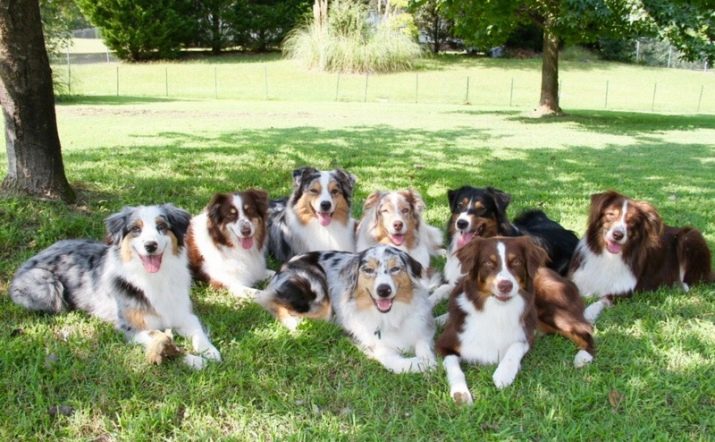
Character and behavior
Devotion, sociability, kindness and cheerfulness are the main positive traits of the Aussie. This versatile breed is successful as a companion, guard, and just a full-fledged member of the family.
A breed with a spurt of vitality, a cheerful disposition, which is practically in constant motion. Idleness is not their lot. Aussie will not sit still, waiting for something, she always has a lot of her dog business. They are extremely inquisitive and sensitive to the slightest rustle or any extraneous sound.
Dogs really enjoy spending time with their owner, whether it be a morning jog, play or a bike ride. If the owner is busy, the businesslike companion will go about his property, play with objects, look after the household, check the charges entrusted to him.
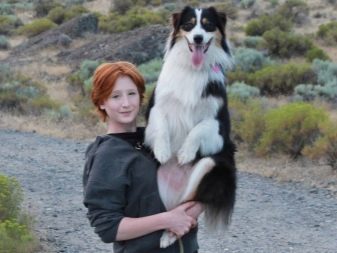

Australians are sincere and devoted to each member of the family, but only the owner will remain the center of their whole life. For an Aussie, there is nothing more important than pleasing him and getting the master's approval. To accompany the owner to work and happily meet him after work, amusingly wagging the bobtail and lovingly looking into his eyes - there is no greater joy for the faithful dog soul of the Aussie.
The dog is really endowed with special empathic abilities for a person, accurately and instantly captures the mood of the owner, quickly adjusting to him. Rejoicing together, showing a sense of solidarity - these sensual talents of Aussies delight and delight.
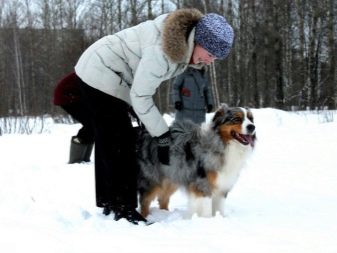
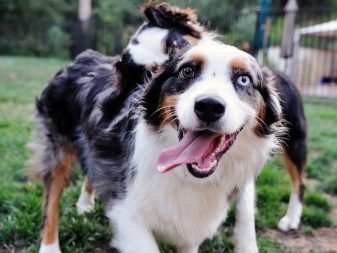
Australians are inherent in the qualities of responsibility, reliability and vigilance - they are born hard workers, quite capable of adequately protecting themselves and their close environment. Without a doubt, the Aussie can be trusted with the safety of the home surrounding the area. She will cope with the protection of the child, not letting him out of the yard. Moreover, he will not allow any animal to stray from the herd he protects, be it goats, sheep or cows.
For all their emotionality and liveliness of character, animals have a stable and balanced psyche. They do not tend to give false alarms, bark for no reason at any moving object. And if a dog makes a sound, then, from its point of view, there is a significant reason for this. The barking bark of the Aussie will always warn the owner about the arrival of friends or guests.
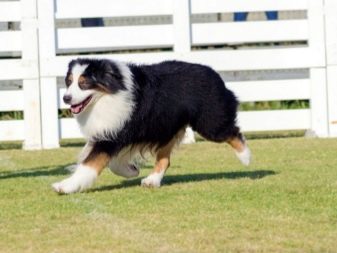
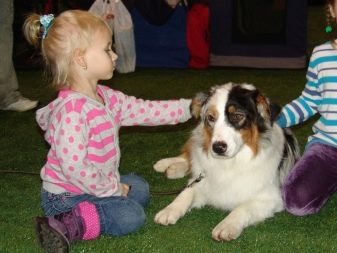
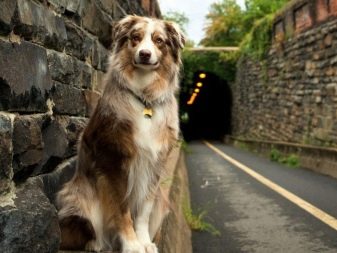

The high intelligence of the breed is accompanied by extraordinary intelligence, natural observation, insight and instant reaction to changes in the environment. Dogs love to solve feasible situational puzzles.
Often, the owners themselves are amazed at the ingenuity of their pets, not realizing that to observe and "wind up on your mustache" is an amazing quality characteristic of the breed. It is common for Aussies to open a pretended gate or door to sneak out for a walk. It will not be difficult for her to get to the yummy by opening the bedside table or refrigerator.
The shepherd dog is wary of strangers, it will watch them vigilantly from a distance. With friends of the owner, the dog keeps restrained, but friendly, remembers them and then recognizes them.
Having a subtle sense of the home microclimate, Aussies do not accept quarrels, they tend to live in peace and harmony - despondency and conflicts are not in their nature. In conflicts, the dog is diplomatic, eloquently appeals to the dialogue of the parties.
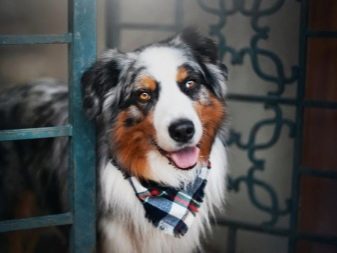
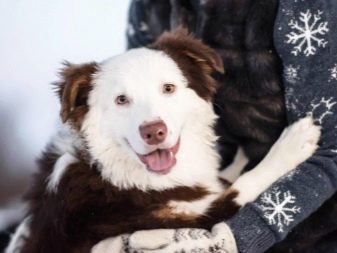
He treats children with care and, one might say, anxiously, like a nanny. The dog senses children of any age and will not harm children. She allows them to pat her by the tail, squeeze her tightly, without showing even a shadow of irritation or displeasure.
A funny and adventurous companion in fun Aussie games will become for school-age children. In the morning he will accompany them to school, and after class will meet and invite them to play or take a walk.
Aussie for teenagers will be a faithful companion, especially in sports. A hardy and strong dog will support the athlete in a long cross-country race or in a bicycle race, follow him on a hike.
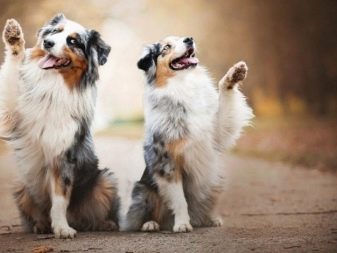


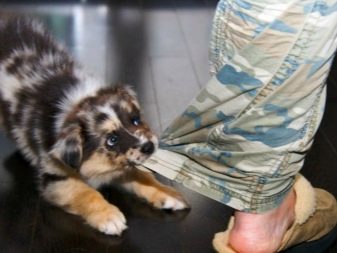
It is noteworthy that when returning the lost sheep to the herd, the Aussie bites her on the hind leg. With babies, a dog can show the same behavior, therefore, when raising a dog, this moment must be taken into account.
Communicating at home with other animals, the Aussie seems to understand that they are not competitors for her, but members of a large and friendly family. This is where her peaceful behavior comes from.
The clockwork Australian will quickly establish good contact with any non-aggressive animal, be it a dachshund or a cat. However, keeping such a ringleader with Caucasians or Rottweilers is not worth it, since these breeds are too jealous of their territory and do not tolerate the presence of other animals in the house.
Despite the fact that Aussies are not evil by nature and will never be the first to attack, they will not shy away from a fight and will be able to give a decent rebuff. Such collisions are fraught with serious mutual injuries.
Aussies manage to communicate loyally with cats, even if they are neighbors. Warm friendly relations often develop between the dog and the owner's fluffy pet, such a couple is not averse to fooling around and relaxing, warming each other. The couple has an unobtrusive and respectful relationship.

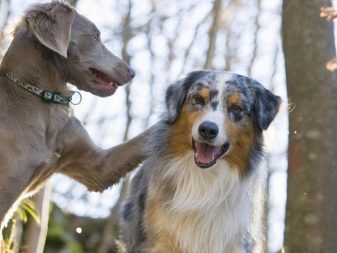
Smaller pets (chinchillas, hamsters and others) do not awaken the hunting instinct in the dog; you should not worry about their safety in the presence of Aussies.
The cunning and acting inclinations of the Aussies are unparalleled. It costs nothing to her, having dulled the vigilance of the owner, to pull off the table in advance of her favorite yummy. And then, innocently wagging his bobtail, gently suck up. Therefore, the owner should be more cunning and know the psychology of the animal well.
Australians are especially popular with American Indians. Struck by a lively canine intelligence and an unusual look, the Indians revere the Aussies as a totem animal and call them ghosts ("ghost-eyed"). They are sure that Aussies are able to communicate with otherworldly images of those who have passed away, compose songs and ballads about them.
The most significant character and behavioral characteristics of the Aussie are revealed during the participation of the breed in Agility competitions. The rapidly gaining popularity of the agility show is the native element of the breed. In any section of these competitions, a trained dog has a real chance of winning.
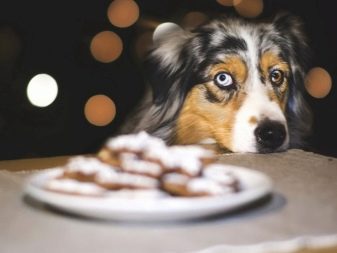
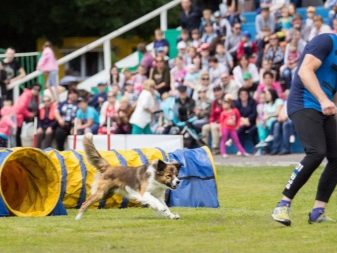
The Aussie is a working dog, always ready for new commands and energetic games, gladly responding to any sporting initiative of the owner.
In the history of the breed, there are cases when the Aussie saved a person's life. So, once a famous breeder of the breed found himself in trouble, having fallen with his horse to the bottom of the canyon. The trouble happened tens of kilometers from the nearest ranch. For several hours, the tireless Strick ran continuously to bring help and rescue the owner from trouble. And this help was provided thanks to a devoted friend.
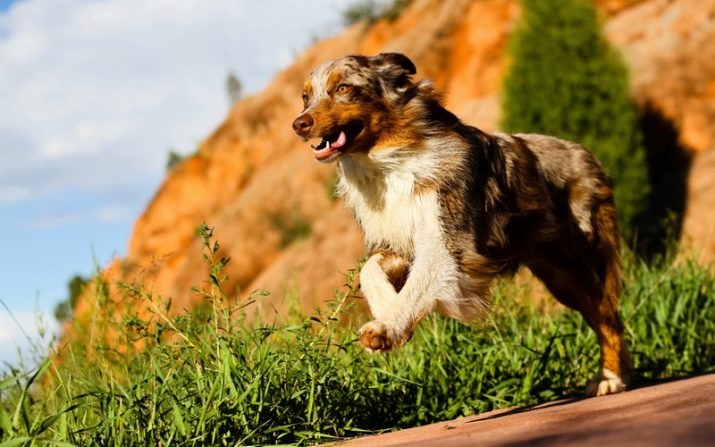
What are the defects?
There are complexes of defects typical for the breed, provided for by the standard. Of course, this is irrelevant for the owners if they do not cause any physical discomfort for the pet and do not worsen the quality of his life. However, in these cases, the pet's participation in exhibitions will be limited. Disadvantages typical of the breed include:
- distortions of the body and the presence of stiffness in movements;
- malocclusion and uneven teeth;
- unpainted;
- white color on the body;
- undescended testes in males;
- aggressiveness;
- insecurity, manifested in character (lowers his tail, cowards, shows aggression);
- problem health;
- deafness (often characteristic of dogs with blue eyes, due to a gene inherited along with color);
- the presence of oncological diseases, a predisposition to oncology.
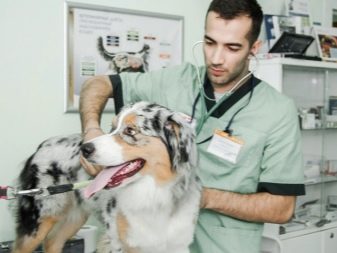
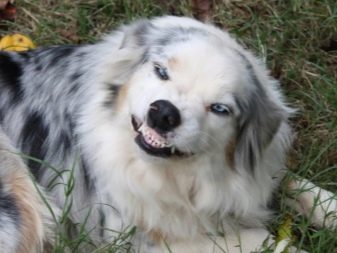
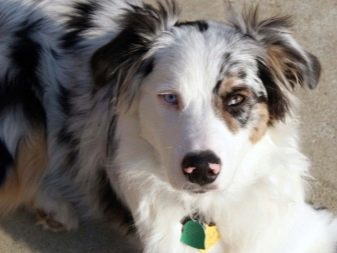
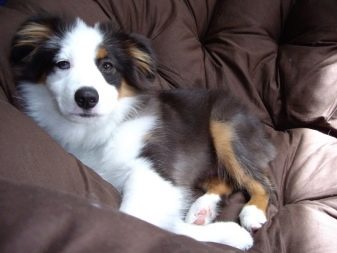
How to choose a puppy?
The Aussie breed is understandably becoming popular in our country, and therefore the correct and competent choice of a puppy is far from an idle question. A wonderful, healthy, real and sociable friend is an undoubted find for every animal lover.
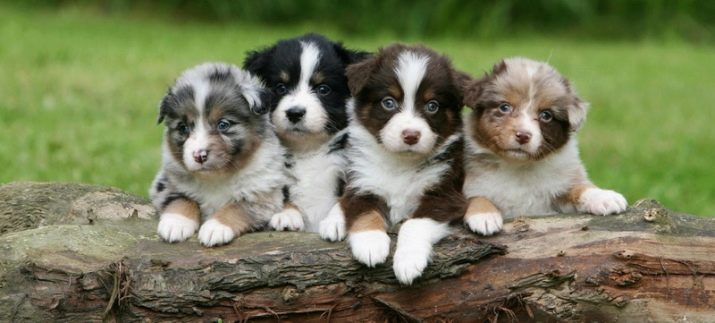
Before choosing a puppy, especially a show-class dog, you should carefully study the breed standard and the list of its possible defects. Consultation with an experienced dog breeder will also not be superfluous, since the Aussie is a rare dog in Russia, and even an experienced dog owner may miss some important aspects. Therefore, a few tips for choosing a puppy will be relevant here.
- Dogs showing excellent characteristics in terms of standard and disposition belong to the elite of the breed, and therefore their cost is great.
- Initially, choose a breeder and nursery, where it is better to buy a baby. It is not worth buying puppies from hands in the markets, because you can simply make a mistake with the breed and buy anything except Aussies.
- It is important to carefully study the pedigree of the baby, pay attention to the health of his parents. Competent breeders are required to possess such information.
- Puppies from the nursery are usually taken from the age of 1.5 months. The puppy selection process is not easy. Take a closer look at the behavior, appearance and character of the candidate. Main criteria: health, absence of jaw distortion and quality of bite, purity of mucous membranes, uniformity and purity of the coat.
- A puppy at this age should look plump and be vaccinated. At the age of 1.5 months, the puppies are active, but quickly get tired. They eat 4-5 times a day, play and sleep a lot. Healthy kids happily meet new people, do not hide in a corner, do not show cowardice. They are usually curious and hold their tail high.
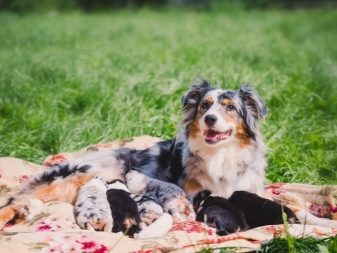
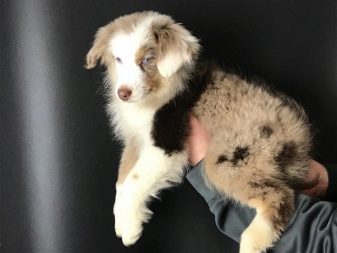


Any interested breeder will be happy to provide advice and answer additional questions from the buyer.
It is noteworthy that some time ago, domestic breeders simply gave Aussie puppies, since few knew about the breed, there was no demand for it. Now the situation has changed dramatically, the average price of a thoroughbred puppy reaches 60 thousand rubles.
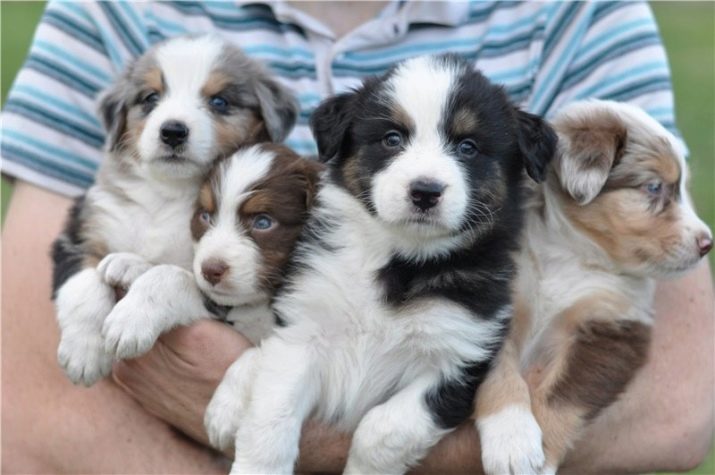
Maintenance and care
A perky and cheerful puppy quickly turns into everyone's favorite. Therefore, it is very easy to pamper him, thereby causing the puppy known educational damage. Having quickly established friendly contacts with all family members, he will vigorously explore and sniff all areas of the house and yard. Showing a keen interest in everything new, the baby will surely taste some objects. Therefore, it is better to hide valuable items away from him in advance, and in return offer various toys, including those that can be chewed. It is better to localize the attitude of household members to a puppy as to a toy if you want to raise a real Aussie.

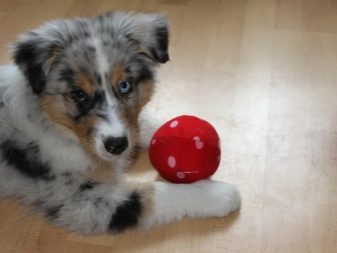
It is important to immediately discipline your puppy by giving it a lot of time and patience. The priority commands that need to be initially taught to the baby are "fu" and "no". Severe punishment of the puppy for any wrongdoing is unacceptable. Quite often a strict reprimand is enough, the meaning of which the puppy will understand intonationally.
From an early age, the instincts of a guard are cut through in puppies. So, they like to rake their in-game items in one place, and then desperately defend them. As a kid, the Australian willingly undertakes to protect any small animals (chickens, rabbits, hamsters, etc.) so that they do not leave their habitat.
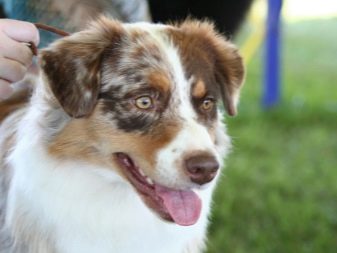
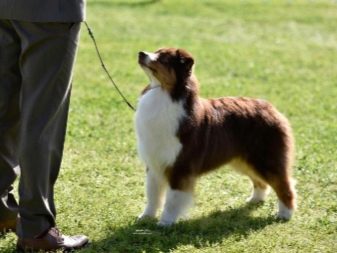
A puppy needs constant attention, communication and interaction with people. Therefore, it is advisable to conduct classes with him every day, preferably in game forms, while simultaneously checking and training various useful skills in him.
Aussies need early socialization, since the instinct to protect and protect property is instilled in it with mother's milk. Even with the smallest threats or attempts that look like threats, the puppy can show a daring harshness.
Taking into account its average size, it is convenient to keep a mature dog not only in a private house, but also in an apartment. By virtue of their character and temperament, they will never turn into a sofa sloth. Of course, life in the confined space of the Aussie will obviously not be to their liking, and therefore frequent walking of the dog is an indispensable condition for its stable health and good mood.
The best option for keeping an adult dog would be a spacious open-air cage, in which, feeling like a true owner, the dog can still rest and retire. A light enclosure with a booth for the size of a dog, insulated for the winter, is the best option for keeping it. The entrance to the aviary should not be closed.
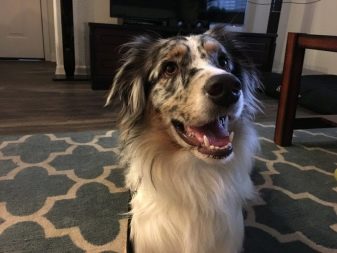
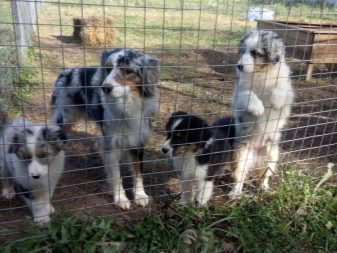
It is forbidden to keep Aussies on a chain, as this has an extremely negative effect on the character of the pet. Any space constraints are extremely annoying for the dog.
If the Australian is kept on the farm, then usually he himself determines his place near the barn or directly in the barn near protected animals (security strategy and tactics). In these cases, you should build the dog in the place of his choice and not interfere with his desire to control the situation.
The apartment version of the Aussie content assumes the provision of appropriate physical and intellectual workload. Regular walking the dog - at least 3 hours for a good physical discharge.
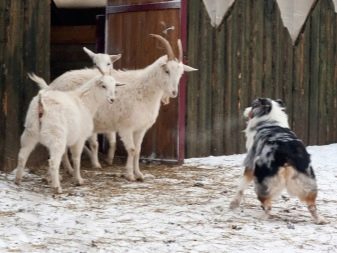
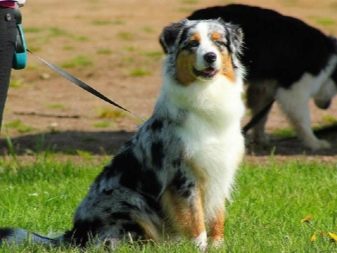
Particular attention should be paid to playing with the dog, puzzling it with various situations that require intellectual and physical costs. For example, find a hidden toy or treat, bring slippers, a control panel, a magazine or a newspaper, etc. Some owners successfully use tunnels specially mounted from improvised means in training and playing with a dog. It is important to create together with the animal, the Aussie will understand this and appreciate it with gratitude, answering you in this amazing creative dialogue.
If you have a constant shortage of time, then it is better not to purchase this breed. Apart from problems and disabled items, you will not get anything good. A bored pet will howl and bark loudly, without giving these neighbors much pleasure.
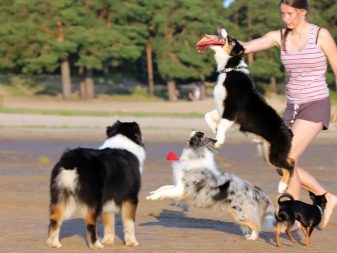
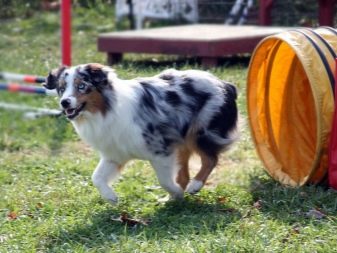
The Aussie shows his best qualities only in those cases when they constantly pay attention to her and show that the owner is not indifferent to her.
Thorough grooming is another prerequisite for good parenting. The Aussie is a breed that requires careful and careful grooming. The necessary hygiene procedures will have to devote a lot of time. Here, combing, and water procedures, and cleaning the ears and eyes, and trimming the claws. In this context, the basic rules are:
- Aussie coat should be tidied up at least 3 times a week;
- during the periods of autumn and spring molting, the brushing procedure is carried out every day using a special slicker;
- bathing the dog is usually done every 2-3 months;
- ears are cleaned twice a week with a soft swab, removing dirt and wax;
- often the dog's eyes begin to water, they are examined every day, rubbing with cotton wool dipped in a weak solution of potassium permanganate;
- the dog's claws are checked once every 30 days, cutting off the regrown tips with forceps or a special nail clipper;
- the pads of the dog's paws are checked immediately after the walks, and if abrasions are found on them, they are treated with vegetable oil.

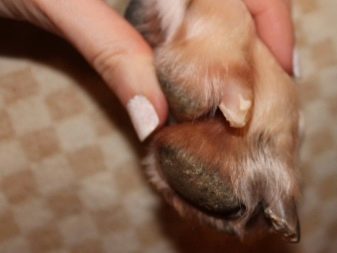
Aussies molt extremely profusely, during this period the whole room can be covered with wool. If the dog is losing hair excessively, then this is a reason to contact the veterinarian, since excess hair during molting indicates a vitamin deficiency in the diet or indicates a serious illness.
Once a quarter, dogs should be dewormed and periodically treated for fleas. Annual vaccinations, as well as preventive measures, should not be missed. It is convenient to protect the animal from ticks using a special collar or using special preparations.Dangerous disease of the dog with piroplasmosis, carried by arthropod insects. Therefore, in the summer, it is necessary to inspect the pet's coat after walking.
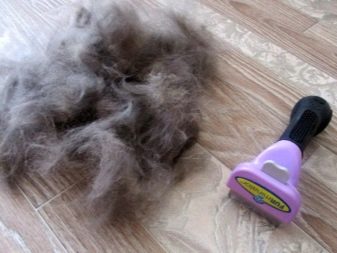
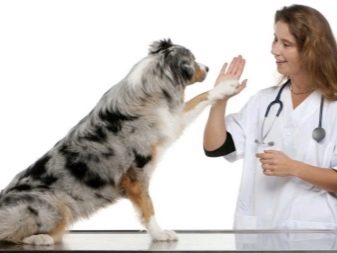
Nutrition
For dogs accustomed to a mobile and active lifestyle, replenishment of energy reserves is extremely important. The Aussie is a breed in particular need of a nutritious and balanced diet. Therefore, natural food is more preferable for them than industrial food.
The Aussie menu should include fresh or cooked lean meats and offal. The daily diet consists of cereals (buckwheat, oatmeal), diversified with fresh dairy products, seafood, vegetables and fruits.
Feeding regimen - twice a day: in the morning - a light breakfast, in the evening - meat dishes. The food is seasoned with vegetable oil or fish oil to promote the growth of a healthy and silky coat. It is forbidden to give Aussies smoked meats, sweets, potatoes, river fish, pasta and bread.
If it is customary for the dog to be given dry food options, then it is necessary to choose a special option for energetic breeds.

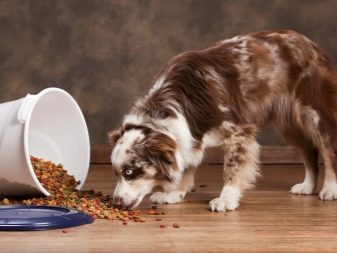
It is worth remembering that Australians are prone to obesity, and therefore it is harmful to feed them unnecessarily. You should not feed them fatty and high-calorie foods.
Education and training
It is extremely interesting and exciting to educate and train Aussies, they love to learn and, like a diligent student, quickly and productively acquire new knowledge and skills. Aussie is ready to tirelessly spend time day and night with the owner, completely surrendering to teaching commands and following orders.
The basic commands ("sit", "to me", "lie down" and "no") Aussie masters with a small number of repetitions, once in a while, with amazing success, demonstrating the skills just learned, barely hearing even a hint of the appropriate instruction. Orders to fetch a ball or a thrown stick are followed by an immediate response to execution.
The Aussie has a hard time accepting monotony and monotony, variety and ingenuity are the keys to successful dog training. Therefore, you should not abuse the repetition of memorized orders - the dog will get bored. You should carefully alternate the teams, and arrange game pauses between trainings (obstacle course, overcoming a tunnel, a log, playing with a frisbee, a hoop, a ball, etc.).
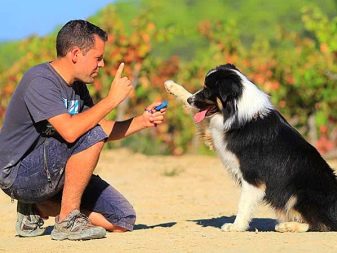
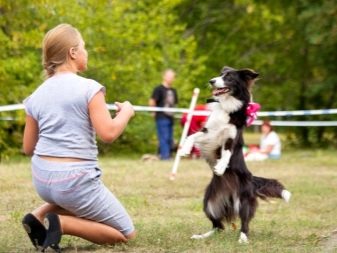
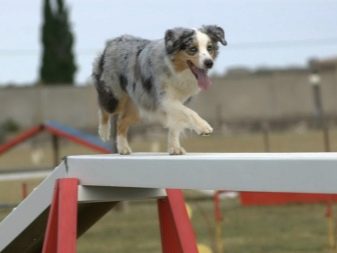
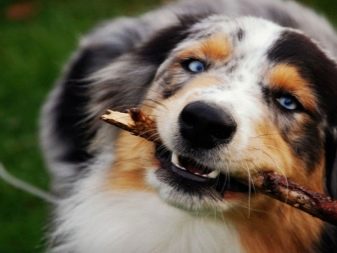
When teaching, do not overuse delicacies. Aussie perfectly perceives and pays tribute to the affection, praise and just the kind word of the owner. The delicacy should be used rarely and for the excellent performance of significant and difficult tasks (difficult tricks).
Aussies are completely devoted to the tasks and can, overcoming painful sensations, execute the command until the strength leaves her. Dislocated legs, trauma to the pads will not become a serious obstacle for the dog to complete the owner's task. It is important to take this point into account during training in order to provide the dog with the necessary timely assistance.
It is important to remember that the Aussie is a kind of "energizer", and this will not suit all owners. Yes, beauty and other wonderful qualities bestowed on a dog by nature amaze and attract. However, it is necessary to take into account the disadvantages, which can negatively manifest themselves in the pair "dog - master". If the owner is a homebody by nature and an active lifestyle is alien to him, if he is a busy person living in a small apartment, then such an “energizer” will bring him nothing but a headache. In this case, complete incompatibility will be observed.
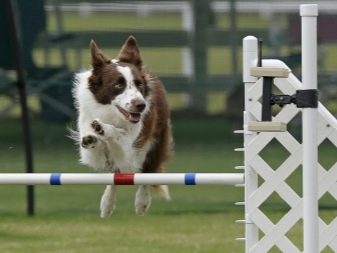

If you do not give the dog proper attention and time, then its enterprising ingenuity will surely find a practical way out in ideas that not every person will like. But for the constant readiness of the owner to devote his time to her, the Aussie animal will respond with devoted love.
Reproduction
To perform mating, the animal must be absolutely healthy, without any physical and mental defects.Otherwise, the dog is not allowed to mate. It is better to neuter or castrate such dogs, otherwise endocrine problems may follow.
The dog becomes mature by about 15-18 months, and they should be knitted from the age of two, when its body is fully formed. In bitches, the first heat occurs at the age of 9-10 months, when it should not be left alone (uncontrolled mating is possible).

Pregnancy, as a rule, proceeds calmly, but at this time it is better to limit the female from excessive activity by slightly changing the diet - feed more often, but reduce the volume of the usual portion.
Jumping restrictions are imposed from about 30 days after mating. Outdoor games (frisbee, agility and others) are excluded from walking. Quiet walks in the open air will be useful.
The dog should be protected from hypothermia. The typical gestation period is 58 to 63 days. In the absence of proper experience, you should not take childbirth on your own, it is better to contact a veterinarian.
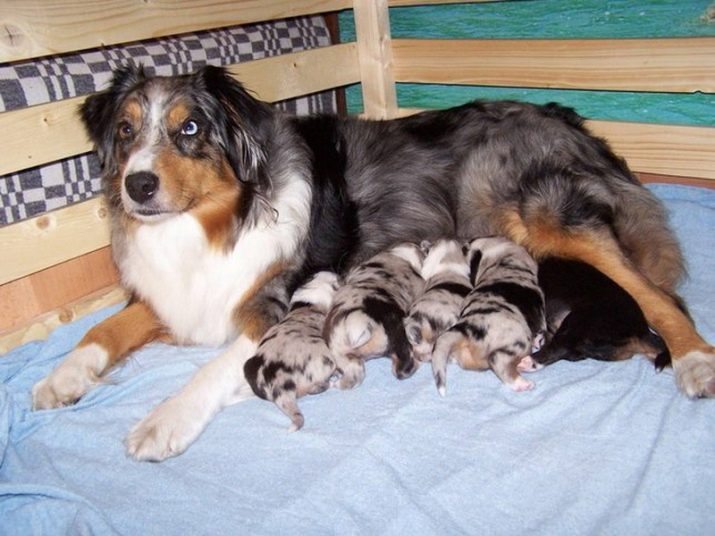
During pregnancy, special attention is paid to nutrition: a properly balanced diet is more relevant than ever. It will not be superfluous to consult a veterinarian on the issue of taking vitamins, especially if the bitch eats natural food.
Health and longevity
The life span of the Aussie is from 12 to 15 years, that is, the dogs live long enough, although the breed does not have good health. Like other artificially bred dog breeds, Aussies are prone to a number of genetic and hereditary diseases.
- Abnormal development (dysplasia) of the hip joints leads to dysfunction of the musculoskeletal system. Excess weight and dietary mistakes increase the likelihood of illness.
- Oncological diseases.
- Epilepsy can occur early - up to 3 years. The acquired variant of the disease progresses due to infections, metabolic disorders, and various kinds of intoxication.
- Deafness is a genetic defect.
- Diseases of an autoimmune nature. There is a predisposition to the occurrence of lupus, scabies, allergic manifestations. The reaction is provoked by the external environment.
- Eye diseases (blindness, cataracts).
- Dermatitis, allergy tendency.
- Cancer malignancies, usually occurring in dogs over 7 years of age, can be fatal.
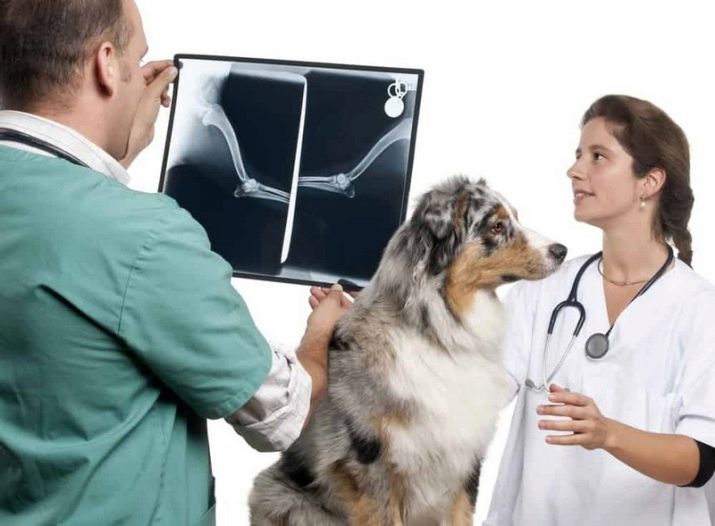
It is noteworthy that the red merle Aussies do not tolerate sunlight very well. For this reason, in summer, it is recommended to take them out for walks early in the morning or in the evening after sunset.
Reviews
Experienced owners note the extraordinary energetic charge of the breed, quick wit and excellent guarding qualities. Among the advantages are:
- loyalty;
- high intellectual development;
- quick learning;
- willingness to work independently and achieve results;
- livability, friendliness, love for children;
- sportiness and dedication when performing tasks.
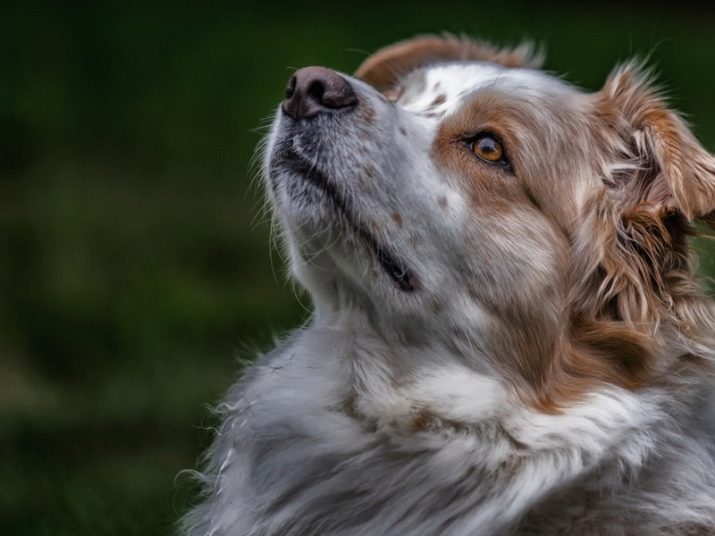
As a relatively negative quality of the breed, there is a constant need for high mental and physical stress, which in some situations becomes unnecessary. In the absence of vigorous activity, the Aussie is prone to destruction, which is especially characteristic of young dogs. High temperament Aussies, strong competitive potential, contribute to the tendency to conflict situations between individuals of the same sex.
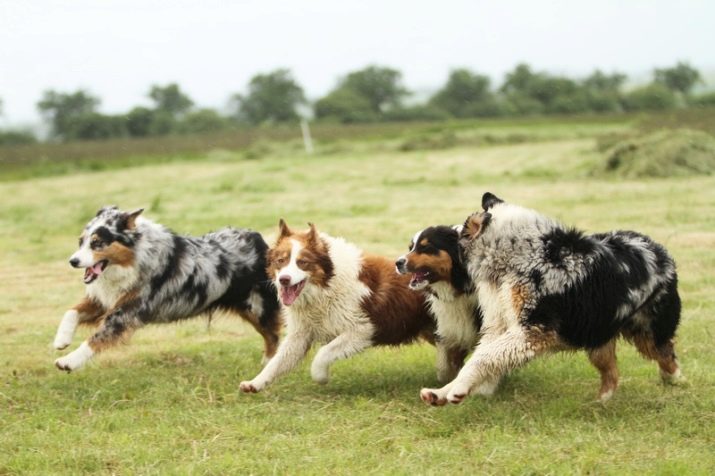
Australians should be started by experienced dog lovers, for beginners this option is most likely doomed to failure. There are two reasons for this judgment: the fast and dynamic, like an energizer, the breed requires a quick and correct reaction of the owner to the actions of the dog; the outstanding intellectual abilities of the Aussie, her unquenchable desire to occupy a dominant position, presuppose understanding, constant control and skillful guidance to her by a master of her craft.
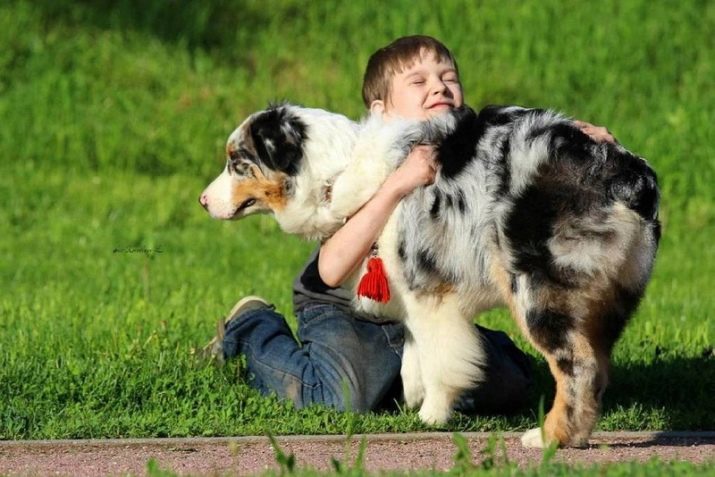
For a description of the Australian Shepherd breed, see the following video.






































